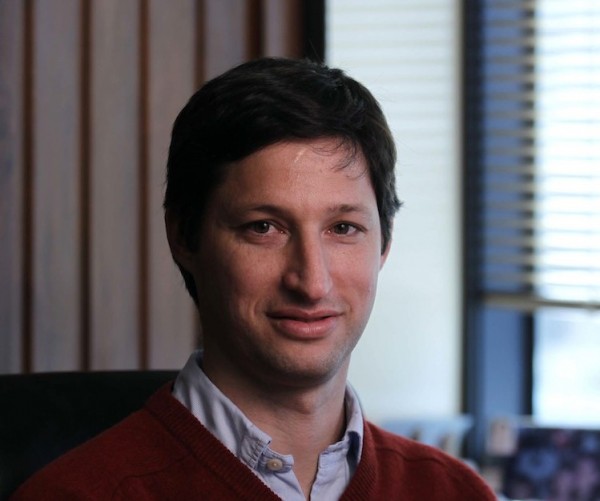
It has been a little over six months since Argentina’s La Nación newspaper company bought and took over operations of impreMedia for an undisclosed amount in March of this year. The Argentinian company, through its newly created subsidiary US Hispanic Media Inc. (USHM), acquired 90 percent of impreMedia and senior debt holders GE Capital and Goldman Sachs kept the remaining 10 percent. You can read more details about the takeover in my article on Poder magazine.
Since their arrival, the new owners have focused on identifying problems and reorganizing the company. To accomplish the task, USHM named Francisco Seghezzo, COO of impreMedia in April. After an initial evaluation, the former corporate planning director of La Nación in June eliminated some corporate management positions, including Ginger Neal, SVP Digital and Steve Bentz, Chief Revenue Officer. Among the early changes, he divided the company into three new business units – West, East and Digital – to streamline the functionality of impreMedia’s assets by geographic area to act quickly and focus on local companies.
After six months in charge, I spoke again with Seghezzo to get his assessment on the company’s current situation. Here’s a portion of the exclusive interview, where he reveals plans to increase circulation, staff and production of English content:
MM: What’s your current evaluation of the company after your first 6 months in charge?
FS: When we came in we established that in 2012 we’d focus 90% of our efforts in planning and 10% in execution and that would reverse in 2013. In the planning process we’ve identified an important number of opportunities based on the assets, important audiences and brands that we have.
The planning process has taken us a lot longer than we anticipated – adjusting the ideas to the execution and market characteristics – but we think we have interesting projects that will increase circulation in all our papers and the visibility our digital Enterprise. We have advanced in renovating the structure and developing circulation tactics that are focused on distribution logistics.
We’ve taken several actions to boost circulation and improve points of sale. We’re also developing other consumer incentives that we’ll begin in November. We have yet to launch our best initiatives, including an adjustment in the distribution outlets.
We’re also implementing a change in structure and focus of our digital enterprise. Our team is almost complete. We’re trying to add other digital inventories to our network and we’re poised to see an increase in traffic and sales in 2013.
MM: Earlier this year you said you would increase circulation of the dailies, which had undergone severe cuts with the previous management. Have you started the process?
FS: We’ve increased La Opinión’s circulation by a daily 3,500 copies, which reinforces that the brand is strong. We are currently reviewing all the weeklies and we’ll probably be increasing circulation for some of them. We have competitors in all the regions and we want to strengthen our coverage.
We think there’s an opportunity in each market. The potential we have in national coverage of our print properties is not being taken advantage of. In order to highlight that we have an important national coverage, we can increase circulation of our weeklies as well as our paid dailies.
MM: Has your online audience grown in the first six months since USHM took over impreMedia?
FS: impreMedia properties have 2 million total unique visits per month – that number has been pretty stable. What we have seen is an increase in return visitors and page views. We’ve also been working with other indicators. People are coming to us through direct visits, not Google search. They’re typing our property addresses and the bounce rate has improved.
We’ve worked on the digital front to fix things. We’ve improved the text links. That has allowed us to see more pages viewed and increased visit duration. We’ve also refined story headlines to get better search rankings. We’ve streamlined the commercial structure. We’re working on content and the overall product, focusing on the design and navegability of the sites.
MM: With census numbers showing there are increasingly more U.S. born Hispanics that are more comfortable speaking English, do you still envision viability and profitability in Spanish-language publications?
FS: We’re very much aware of the numbers and the probability that a large percentage of Hispanics prefer English. That’s helped us come up with three visions on the development of future projects. Our print properties will continue to be in Spanish, but we eventually plan to launch an English version. For the time being, we don’t believe in publishing a bilingual product.
Down the line, we plan to launch some products that will accompany the paper, like special collectable sections that could be bilingual. But they would be written in English and Spanish – they wouldn’t be translations. The same goes for online. The websites would be in both languages – and not simple translations, because that doesn’t work.
We will be an English digital site at some point, but we need the structure to generate content. We will begin gradually experimenting with English content online starting in the second half of 2013. We’ll probably begin with Vista magazine or a weekly. We may be able to get all our sites in English by 2014.
In terms of the newspapers, we will remain focused on Spanish. If we were to consider doing English content, it would be another paper.
Even if the census shows there are 50 million Hispanics, they’re not all Spanish-language speakers. We estimate that to be a market segment of 10 million, which is still very enticing. There’s probably another 15 million that may be attracted to our products from a cultural perspective.
While we’re conceptually evaluating the English option, we have yet to see whether the English-speaking Hispanic market would be interested in a targeted publication or if we would be competing with the established mainstream English media.
MM: Hoy NY online seems to be abandoned. What are the plans with that site?
FS: This is a brand that we have not focused on at all. We’re still evaluating whether there’s any value that can be rescued from that site. We haven’t seriously considered if we should even relaunch the site.
MM: In the past few years, impreMedia has done a series of major layoffs in its properties. La Opinión, for example, had more than 100 people in its editorial department in 2004. That number has dropped to 34. You’ve said you want to increase coverage. How do you plan to do that with your current staff levels?
FS: We plan to add personnel to our newsrooms. We’re going to add 3 to 5 people in each paper and in our digital content department. Part of the plan to improve circulation is to focus on experts and specific topics that we think will help us increase our audience – such as sports, entertainment and local news that focus on people’s interests and that can help them in their day to day lives. We’ll also highlight local soccer tournaments. We’ll also launch collectable supplements that will be fixed sections of the paper.
We want to produce unique content and will work to that end.
MM: For the past several years the newspaper design of the impreMedia properties was outsourced to Mexico. Are there plans to return that portion of the work back to the U.S.?
The outsourcing of editorial and commercial operations happened before we arrived. We brought it back to the U.S. as part of our strategy, because it has a lot to do with our finished product and we wanted to have original designs. An outside company continues to do a portion of our commercial ads, but we will eventually bring everything back in-house.
MM: Do you think you’ll be able to improve the monetization of your websites?
It is a big challenge. The digital sites have a very different competitive environment. Paper brands have always been a relevant factor when getting advertisers. But it’s not the same for a digital brand, which remains undervalued.
What we’re trying to do is improve our sales force to sell our value proposition. We’re working with networks and other sites to get better coverage. We believe we will be able to better monetize our sites. Digital newspapers haven’t evolved like print publications. The business has other margins, but also other possibilities.

Veronica, why do you keep insisting that Hispanics are going to stop speaking English? The fact is that bilinguals watch more spanish television than english television. Just look at Univision’s ratings. They reach more Hispanic Bilinguals than any other english network. Do you really believe that promoting bilingualism makes you look more affluent and more educated? It amazes me how we are the only minority group in this country that promotes less of us than more of us!!!!
I think you meant to say “stop speaking Spanish” not English. I don’t suggest any such thing. In fact, I’d suggest you read my column on Poder Hispanic magazine “Betting on Spanish”: http://bit.ly/Pp9Xz3, to which I made reference to on a post on October 4. It would be remiss of me not to point out the growth of English-speaking Latino media consumers and ask executives how they’re addressing it.